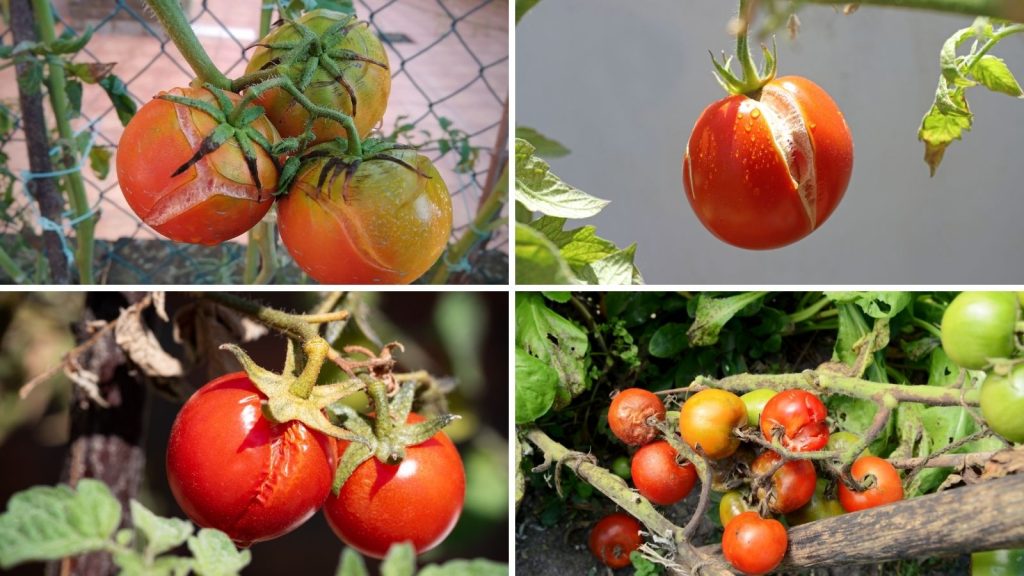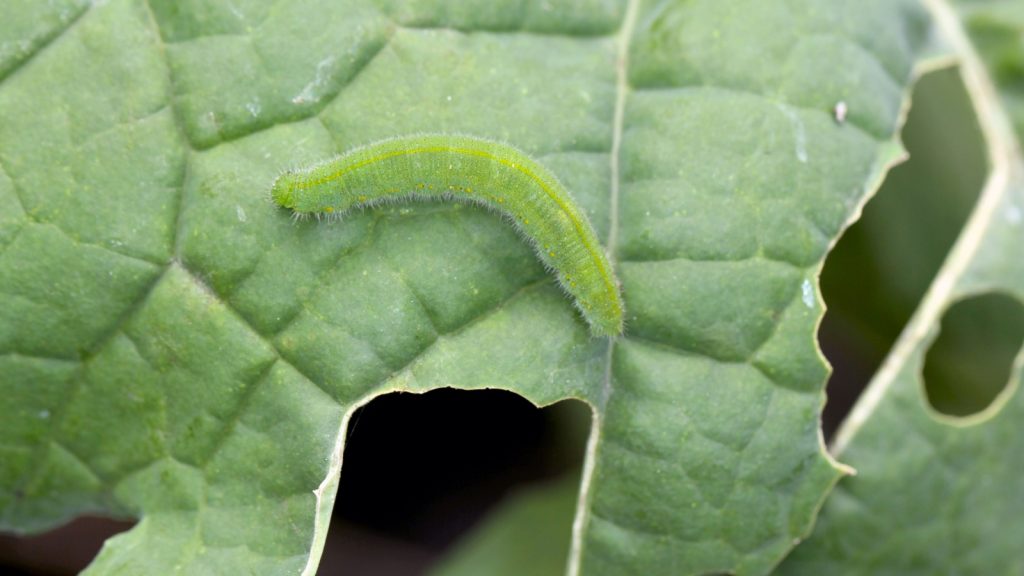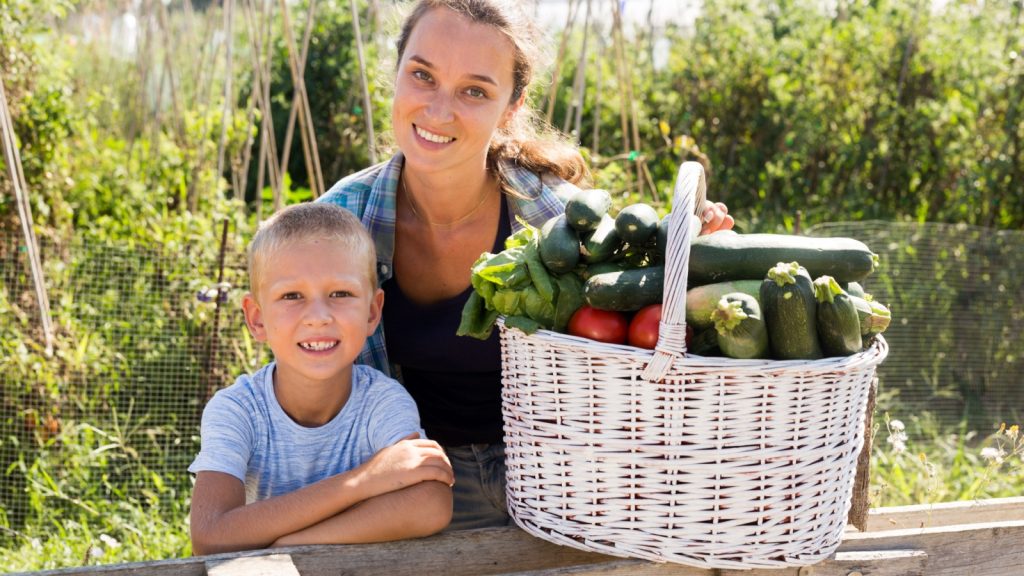After years of growing tomatoes in our garden, we’ve experienced the frustration of harvesting beautiful, almost-ripe fruits only to find them split and cracked. It’s particularly disappointing when you’ve nurtured these plants for months, only to lose a portion of your harvest to splitting. Through trial and error, we’ve developed several effective strategies to prevent this common problem.
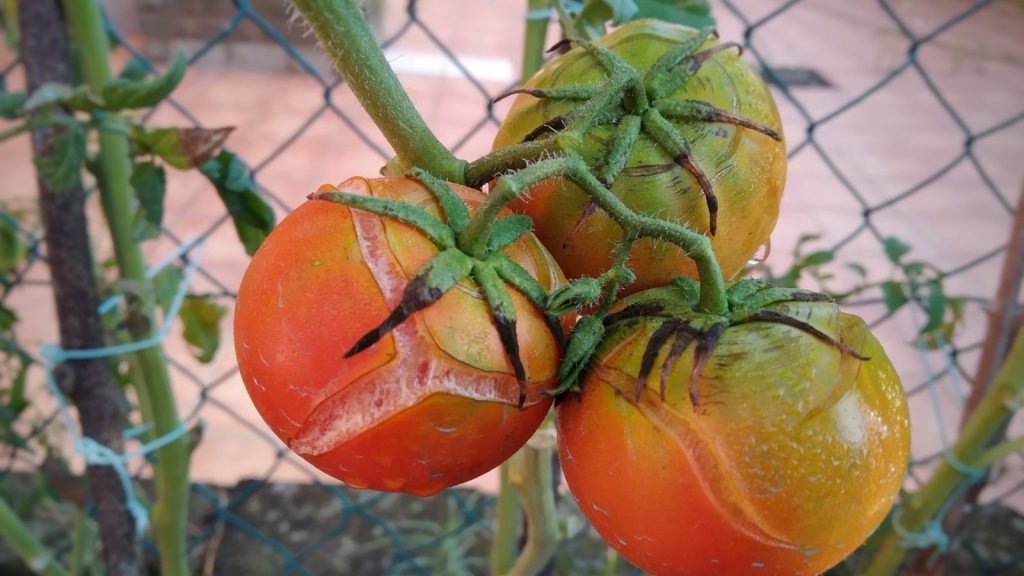
Understanding Why Tomatoes Split
Tomato splitting occurs primarily because of fluctuations in water availability. When tomatoes experience a dry period followed by a sudden influx of water (either from rain or irrigation), the inside of the fruit expands faster than the skin can grow. This creates pressure that causes the skin to crack, typically in a circular pattern around the stem end or in vertical cracks down the sides.
We’ve noticed this happens most frequently after a summer dry spell followed by a heavy rainstorm—the plants drink up the sudden moisture, and within 24-48 hours, many of our nearly-ripe tomatoes develop splits. The issue is particularly common during the height of summer when temperatures fluctuate dramatically between day and night.
Consistent Watering is Key
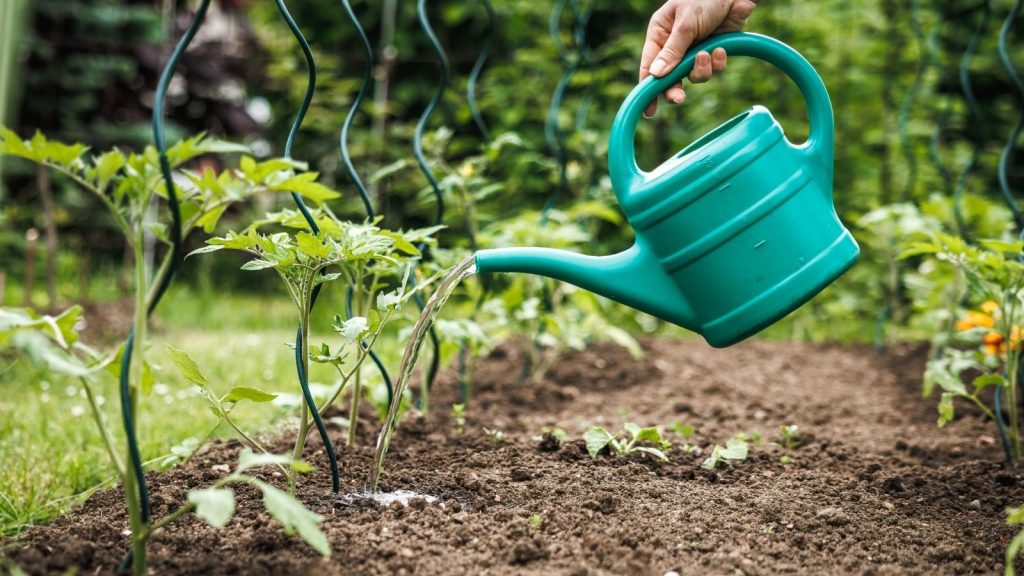
The single most effective strategy we’ve implemented is a consistent watering schedule. Rather than allowing the soil to dry out completely between waterings, we maintain steady moisture levels throughout the growing season.
In our raised beds, we water deeply once or twice a week depending on temperature, providing about 1-2 gallons per plant. The goal is to keep the soil consistently moist but never soggy. When the forecast predicts heavy rain after a dry spell, we sometimes reduce our regular watering to prevent the upcoming deluge from causing a too-rapid increase in moisture.
Mulch has been our greatest ally in maintaining consistent soil moisture. We apply a 2-3 inch layer of straw mulch around our tomato plants once the soil has warmed in late spring. This mulch layer prevents rapid evaporation and helps buffer the effects of both drought and heavy rainfall. Since implementing heavy mulching, we’ve seen a dramatic decrease in split fruits, even during unpredictable weather patterns.
Choose Crack-Resistant Varieties
Not all tomato varieties are equally susceptible to splitting. After experimenting with dozens of varieties over the years, we’ve found that thick-skinned paste tomatoes like ‘Roma’ and ‘San Marzano’ tend to resist cracking better than large slicing tomatoes.
For slicing tomatoes, we’ve had excellent results with crack-resistant varieties like:
- ‘Mountain Fresh Plus’
- ‘Defiant’
- ‘Celebrity’
- ‘Mountain Merit’
Cherry tomatoes are particularly prone to splitting due to their thin skins, but we’ve found ‘Sun Gold’ and ‘Black Cherry’ to be somewhat more resistant than other cherry varieties.
While heirloom tomatoes are prized for their exceptional flavor, many are more susceptible to cracking. When growing heirlooms like ‘Brandywine’ or ‘Cherokee Purple’, we’re extra vigilant with our water management practices.
Harvest at the Right Time
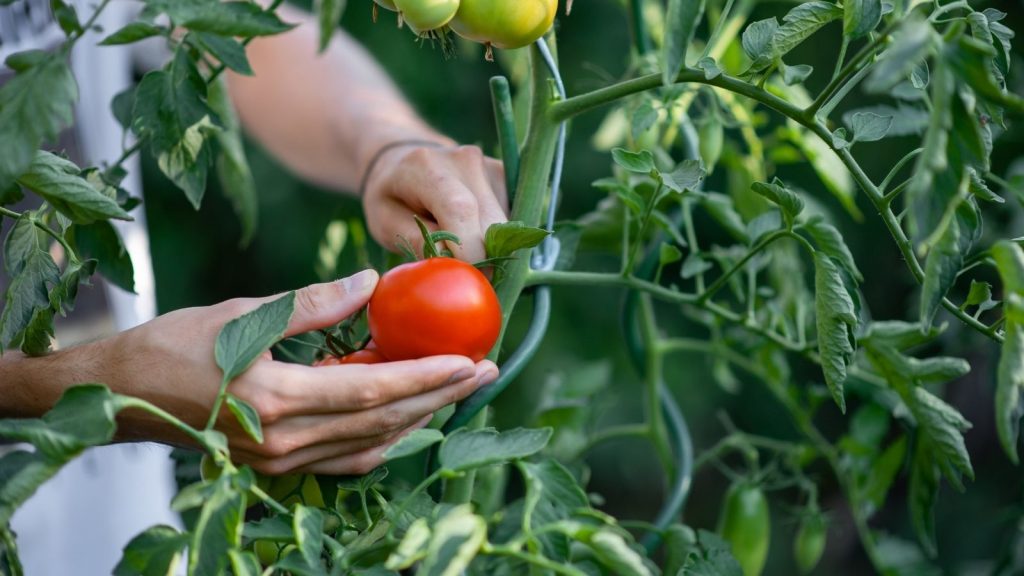
Timing your harvest correctly can dramatically reduce splitting issues. We’ve learned to pick tomatoes at the “breaker stage”—when they’re just beginning to show color but aren’t fully ripe. At this point, the fruit has reached its full size, and allowing it to ripen off the vine doesn’t significantly impact flavor while preventing splitting during that final ripening phase.
This practice is especially important when the forecast predicts heavy rain after a dry period. If we know a storm is coming, we harvest any tomatoes showing even the slightest color change and allow them to finish ripening indoors. These tomatoes still develop excellent flavor, and we avoid the heartbreak of finding split fruits after the rain.
Provide Adequate Calcium
Calcium strengthens cell walls in tomato fruits, potentially making them more resistant to cracking. We add crushed eggshells to our planting holes and side-dress with them during the growing season. Some gardeners swear by foliar sprays with calcium solutions, but we’ve found soil amendments more effective for long-term results.
If you’re dealing with consistently splitting tomatoes despite good water management, a soil test might reveal calcium deficiency. In that case, applying garden lime or gypsum according to soil test recommendations may help strengthen fruit skins and reduce splitting in future seasons.
Protect Plants from Heavy Rain
In particularly rainy climates, physical protection can prevent splitting. When our tomatoes start ripening, we sometimes install simple clear plastic covers over our plants, leaving the sides open for ventilation. These covers prevent the direct impact of heavy rainfall while still allowing air circulation to reduce disease issues.
Row covers or old umbrellas can serve the same purpose temporarily during predicted heavy storms. Just remember to remove them once the rain passes to ensure plants receive adequate sunlight and airflow.
Maintain Healthy Foliage
We’ve observed that tomato plants with abundant, healthy foliage seem less prone to fruit splitting. The leaves provide some protection from direct rainfall and help moderate temperature fluctuations around the developing fruits.
Regular pruning to remove suckers and improve air circulation is important for disease prevention, but we’re careful not to remove too many leaves, especially those shading developing fruits. This natural canopy creates a microclimate that helps buffer both water and temperature changes.
Container Growing Considerations
Growing tomatoes in containers presents unique challenges for preventing splitting. Container soil dries out much faster than garden soil, creating more dramatic moisture fluctuations. If you’re growing tomatoes in pots or grow bags, more frequent watering is essential—sometimes daily during hot weather.
We’ve had success with self-watering containers and water reservoirs that provide a consistent moisture supply. Adding water-retaining crystals to container soil can also help maintain more even moisture levels between waterings.
Learn From Your Garden’s Patterns
Perhaps the most valuable lesson we’ve learned is to observe and adapt to our garden’s specific conditions. After keeping notes for several seasons, we noticed that fruit splitting was most common during specific weather transitions in mid-summer.
By adjusting our care routine during those critical periods—harvesting earlier, providing temporary rain protection, or modifying our watering schedule—we’ve dramatically reduced splitting issues. Every garden has unique patterns, and becoming attuned to yours is the best long-term strategy for preventing tomato splitting.
By implementing these strategies, we’ve reduced tomato splitting from a major harvest loss to a minor occasional issue. While you may never eliminate splitting completely (especially during extreme weather events), these practices should help you save the majority of your tomatoes for the table rather than the compost pile.
Remember that a few split tomatoes aren’t a sign of garden failure—they’re simply part of the learning process that makes those perfect sun-warmed tomatoes taste even sweeter when you succeed. If you do end up with split fruits, they’re still perfectly usable if harvested promptly. Just cut away the split area and enjoy the rest in sauces, salsas, or other cooked dishes.
James is a former logistics coordinator and wilderness safety instructor, whose practical experience taught him the value of sensible preparedness and calm resilience. Passionate about self-reliance, James teaches everyday skills—like water purification, emergency communication, and outdoor safety—to help people confidently handle life's disruptions without fear or overwhelm. His approachable style combines real-world insights with relatable, personal stories and experiences.
